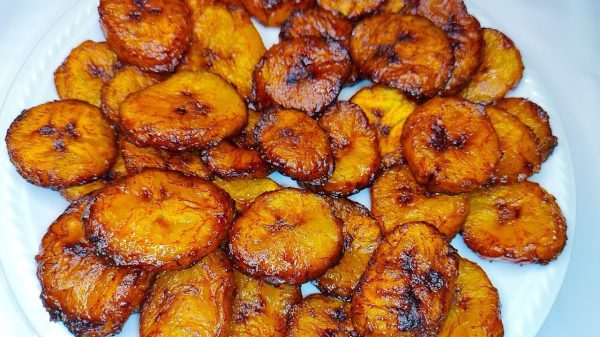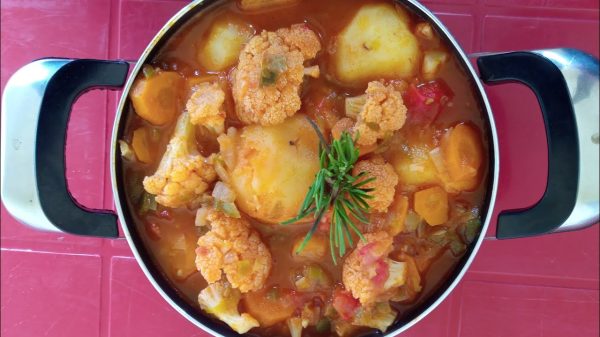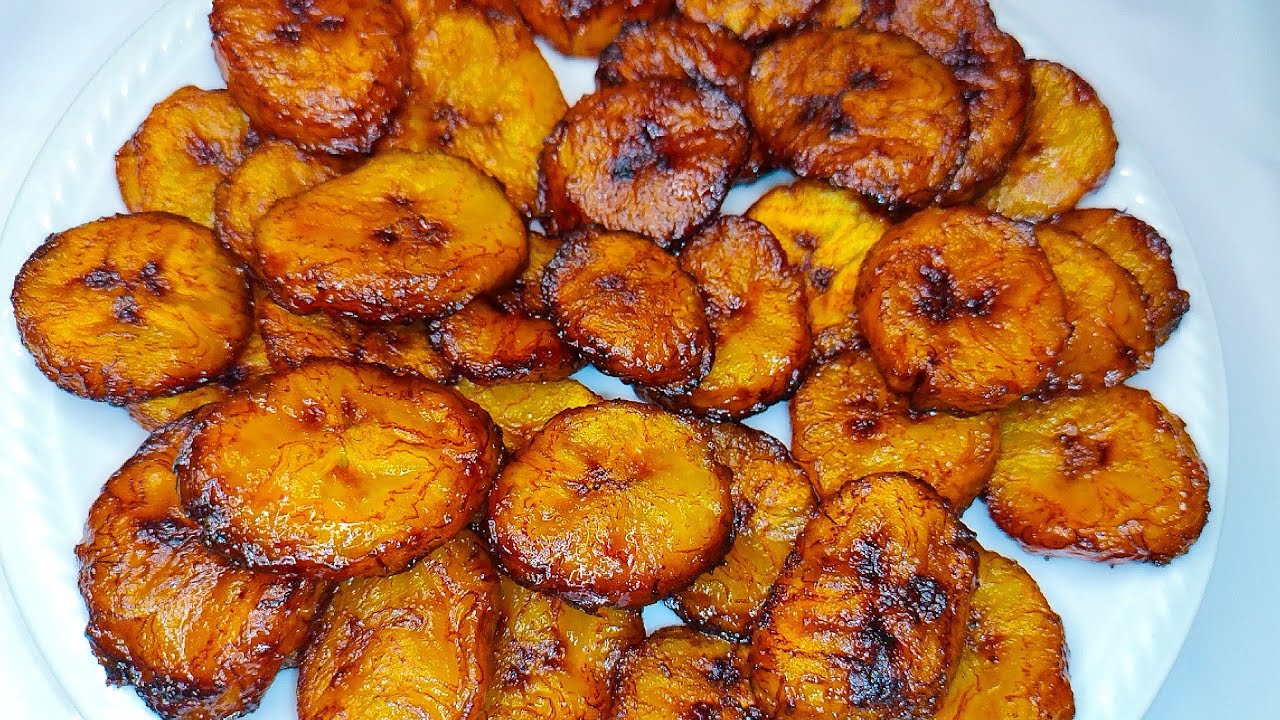Equatorial Guinea, a small yet culturally rich nation on the west coast of Central Africa, boasts a vibrant culinary tradition deeply rooted in its diverse ethnic groups, colonial history, and abundant natural resources.
Influenced by the Fang, Bubi, and Ndowe peoples, as well as Spanish colonialism, the country’s cuisine is a flavorful fusion of indigenous ingredients and foreign techniques. Staples like cassava, plantains, and yams are commonly paired with proteins such as fish, game, and poultry, often enhanced with aromatic spices and herbs. This culinary diversity reflects the nation’s complex history and the adaptability of its people, resulting in a unique gastronomic landscape that is both traditional and dynamic.
1. Succotash (Sukotash)
Succotash, known locally as Sukotash, is a hearty stew that combines corn, beans, and sometimes meat or fish. This dish, though sharing a name with the American version, has been adapted to local tastes and ingredients. In Equatorial Guinea, it’s often enriched with palm oil, peppers, and indigenous spices, giving it a distinctive flavor profile. The use of locally grown vegetables and legumes makes it a nutritious and accessible meal for many households. Succotash is typically served with boiled plantains or cassava, providing a satisfying and balanced dish that reflects the country’s agricultural abundance.
2. Pepesup
Pepesup is a spicy fish soup that showcases the country’s love for bold flavors and fresh seafood. Prepared with whole fish, hot peppers, onions, and various local herbs, this soup is both invigorating and comforting. The heat from the peppers is balanced by the natural sweetness of the fish, creating a harmonious blend of tastes. Often served with rice or boiled plantains, Pepesup is a staple in coastal communities and is enjoyed during communal gatherings and special occasions. Its preparation methods and ingredients may vary slightly between regions, reflecting the diverse culinary practices within the country.
3. Mbika
Mbika is a traditional dish made from ground pumpkin seeds, which are cooked into a thick, flavorful sauce. This sauce is often combined with meats like chicken or goat and served over rice or with boiled plantains. The rich, nutty flavor of the pumpkin seeds provides a unique taste experience, while the high protein content makes it a nutritious option. Mbika is commonly prepared for family gatherings and festive occasions, symbolizing unity and cultural heritage. Its preparation requires patience and skill, as the seeds must be carefully roasted and ground to achieve the desired consistency.
4. Asado de Cabra (Goat Roast)
Asado de Cabra, or roasted goat, is a cherished traditional dish in Equatorial Guinea that highlights the country’s affinity for game and farm-raised meats. The goat meat is typically marinated in a mixture of garlic, onions, local spices, and sometimes lemon juice to tenderize it and enhance its flavor. It is then slow-roasted over an open flame or baked until the exterior is crisp and the inside is juicy and flavorful.
Asado de Cabra is often served with plantains, yuca, or a spicy sauce made from native peppers. This dish is particularly popular during festive occasions and communal celebrations, where its preparation becomes a social event. The communal aspect of cooking and sharing this dish reflects the deep-rooted cultural values of unity and hospitality in Equatorial Guinean society. Its bold flavor and satisfying texture make it a favorite among locals and visitors alike.
5. Okra Soup
Okra Soup is a beloved dish in Equatorial Guinea, known for its rich texture and flavorful ingredients. Made with fresh okra, tomatoes, onions, and various meats or fish, this soup is both hearty and nutritious. The mucilaginous nature of okra gives the soup a unique, thick consistency that is cherished by locals. Often served with fufu or rice, Okra Soup is a common feature at family meals and social gatherings. Its preparation varies by region, with some adding palm oil or groundnuts for additional depth of flavor. This dish exemplifies the country’s ability to transform simple ingredients into culinary delights.
6. Cassava Leaves Stew
Cassava Leaves Stew is a traditional dish that utilizes the tender leaves of the cassava plant, cooked with ground peanuts, palm oil, and spices. This stew is often enriched with meats like beef or fish, creating a protein-rich and flavorful meal. The combination of leafy greens and nuts provides a balance of nutrients, making it a staple in many households. Served with rice or boiled plantains, Cassava Leaves Stew is a testament to the resourcefulness of Equatorial Guinean cuisine, turning every part of the plant into a delicious dish. Its preparation is a communal activity, often involving multiple generations in the cooking process.
7. Grilled Antelope
Grilled Antelope is a delicacy in Equatorial Guinea, reflecting the country’s rich tradition of hunting and game meat consumption. The meat is marinated with local spices and herbs before being grilled over open flames, resulting in a smoky and flavorful dish. Often served with spicy sauces and side dishes like plantains or cassava, Grilled Antelope is enjoyed during special occasions and festivals. Its preparation requires skill and knowledge of traditional cooking methods, passed down through generations. This dish not only provides a unique taste experience but also connects people to their cultural heritage and the natural environment.
8. Fried Plantains
Fried Plantains are a ubiquitous side dish in Equatorial Guinea, cherished for their sweet flavor and crispy texture. Ripe plantains are sliced and fried until golden brown, often served alongside main dishes like stews or grilled meats. Their natural sweetness complements spicy and savory flavors, making them a versatile addition to any meal. Fried Plantains are also enjoyed as a snack or breakfast item, reflecting their integral role in the daily diet. Their simplicity and widespread availability make them a beloved comfort food across the country.
9. Groundnut Soup
Groundnut Soup is a rich and creamy dish made from ground peanuts, tomatoes, onions, and spices, often combined with meats like chicken or beef. This soup is a staple in Equatorial Guinean households, valued for its hearty flavor and nutritional content. Served with rice or fufu, Groundnut Soup is both satisfying and nourishing. Its preparation involves careful roasting and grinding of peanuts to achieve the desired consistency and taste. This dish exemplifies the fusion of indigenous ingredients and cooking techniques, resulting in a meal that is both traditional and adaptable.
10. Malamba
Malamba is a traditional fermented sugarcane drink, enjoyed for its refreshing taste and mild alcoholic content. Prepared by fermenting sugarcane juice, this beverage is often consumed during social gatherings and celebrations. Malamba reflects the country’s agricultural practices and the importance of communal activities in food and drink preparation. Its production involves traditional methods passed down through generations, emphasizing the cultural significance of fermentation in Equatorial Guinean cuisine. Malamba not only quenches thirst but also serves as a symbol of hospitality and shared heritage.
Equatorial Guinea’s culinary landscape is a vibrant tapestry woven from its diverse ethnic traditions, colonial influences, and abundant natural resources. Each dish tells a story of the nation’s history, resilience, and communal spirit. From hearty stews and flavorful soups to unique beverages, Equatorial Guinea’s cuisine offers a rich and satisfying experience that reflects the heart and soul of its people.
Subscribe to our Newsletter
Stay updated with the latest trends in African Pop Culture!


















